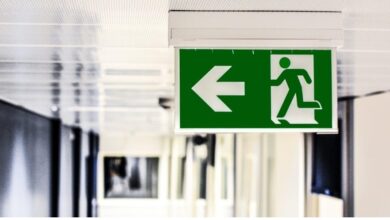protests myanmar netblocksfingasengadget

As the world continues to grapple with the ongoing turmoil in Myanmar, one recent development has brought renewed attention to the country’s struggle for democracy: netblocks. In an effort to stifle dissent and control information flow, Myanmar’s military junta has resorted to blocking access to social media platforms and other communication channels. As a result, protestors have had to find creative ways of getting their message out – from using coded hashtags on Twitter to sharing encrypted messages through VPNs. In this post, we’ll take a closer look at how netblocks are impacting protests in Myanmar, and what tech-savvy activists are doing to fight back against censorship.
Protests continue across Myanmar
Protests continue across Myanmar, as citizens voice their concerns over the slow pace of reform. The demonstrations began in early November after a wave of protests in August and September against military rule. Since then, the protests have spread to dozens of towns and cities across the country. opposition leader Aung San Suu Kyi has condemned the use of violence by police and protesters alike, but her calls for dialogue have gone largely unheeded. Earlier this month, aung San Suu Kyi was released from house arrest, but she remains under tight government surveillance.
According to Human Rights Watch, at least 176 people have been killed and more than 1,500 wounded in the protests since November. In addition to calls for democracy and an end to military rule, protesters are also concerned about economic conditions and alleged corruption by government officials. Myanmar is ranked among the poorest countries in Asia, with a GDP per capita of just $1,000.
Netblocksfingasengadget blocked in Myanmar
Netblocksfingasengadget, a website that allows users to share and discover blocked websites, was blocked in Myanmar this week. The site was inaccessible from the country’s major internet providers on Monday and remained so through Tuesday.
The blocking of Netblocksfingasengadget comes amid wider protests in Myanmar over government policies that have caused widespread food and fuel shortages. Websites that are critical of the government have been targeted by authorities in recent months. In July, police raided the offices of two independent media outlets and seized equipment.
Authorities in Myanmar have denied responsibility for the blocking of Netblocksfingasengadget, but said it was done in order to prevent people from accessing “harmful content.” The website is unblocked in Thailand and most other neighboring countries.
This latest censorship effort follows a long history of restrictions on freedom of expression in Myanmar. Online activity is tightly monitored by the government, which has used laws designed to protect children from harmful online content to clamp down on political dissent.
Facebook banned in Myanmar
Facebook was recently banned in Myanmar, a country where the government strictly controls what its citizens can and cannot access online. The social media platform has long been a thorn in the side of the Burmese government, as it allows for communication between people across the country and around the world.
Although Facebook wasn’t always completely banned in Myanmar, recent protests have led to tighter restrictions on what users can and cannot do online. Police have been stationed at internet cafes and are monitoring protesters’ Facebook accounts to make sure they’re not using the platform to organize or communicate with each other. In addition to Facebook, other popular social media platforms like Twitter and Instagram have also been blocked.
While many people are concerned about how this will affect freedom of speech, others see it as a way for the government to control its population. As more people turn to social media platforms to share information and organize protests, it’s likely that we’ll see similar bans in other countries with repressive regimes.
Twitter blocked in Myanmar
Twitter has been blocked in Myanmar since early this morning as protests continue to sweep the country. The social media site was one of several platforms that protesters used to share updates and connect with each other. According to Reuters, the decision to block Twitter was likely made by the government in order to suppress dissent. Twitter has been a prominent platform for information sharing during the protests and has been used by both government officials and protesters to disseminate messages and coordinate actions. As of writing, it is not clear if Twitter will be unblocked soon.
YouTube blocked in Myanmar
YouTube has been blocked in Myanmar since last year’s protests against the country’s military rulers. The decision to block YouTube was widely seen as a way of prevent people from watching videos that could be used to organize and promote the protests.
Since then, various unblocking tools have become available, but they are not always effective. One common method is to use a proxy server, but this can be difficult to set up and use correctly. Another option is to use a VPN service, but these can be expensive and may not work in all cases.
There have been reports of attempts by the authorities to block access to YouTube using DNS lookup spoofing techniques, but this tactic has not been successful so far.
Conclusion
Protests against the government of Myanmar have been going on for months now, with demonstrators calling for greater democracy and human rights. The protests have recently intensified, with protesters using social media to organize and communicate. However, the government has responded by blocking access to many social media platforms. This article looks at how protestors are using mobile technology in their protests and what effects this has had on the movement so far.



